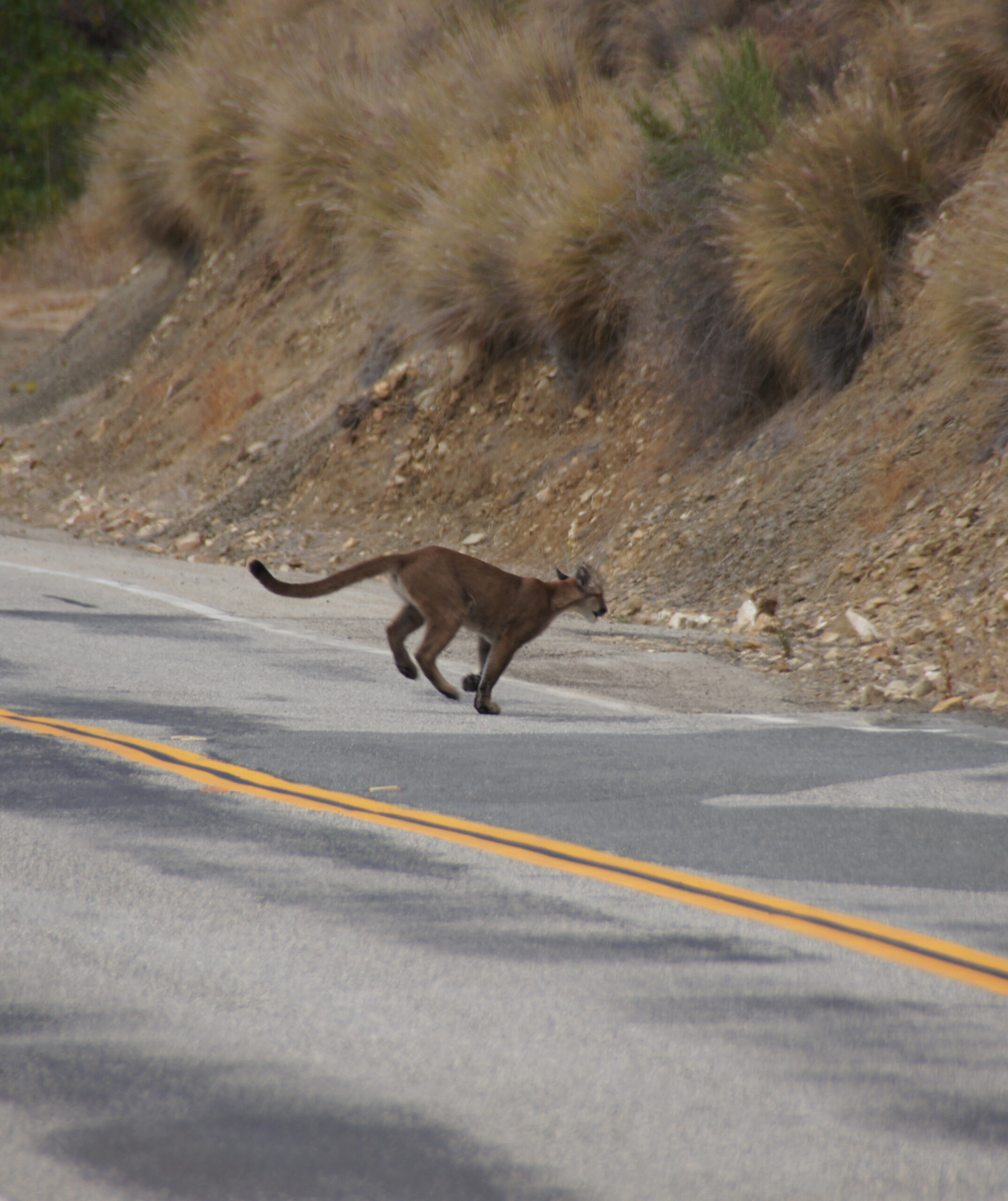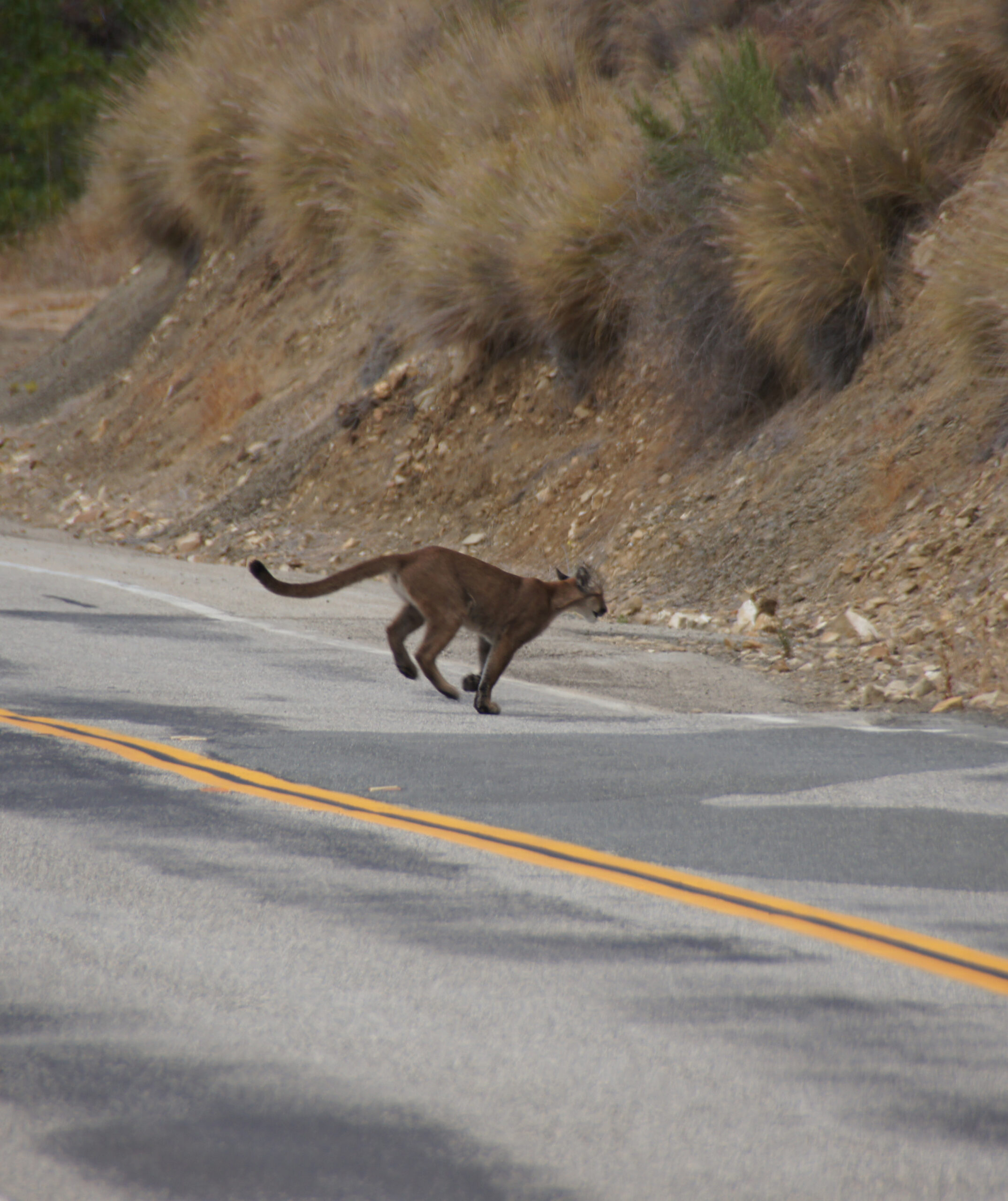Mountain lions have no interest in people or what we’ve built. But after a 2018 wildfire in California, local lions took more risks around highways. They crossed roads more often and moved around more by day. It’s yet another way impacts of human development can put pressure on vulnerable wildlife. In this case, it may be pushing them toward our cars’ bumpers.
The Woolsey fire began near Los Angeles on November 8, 2018. It burned more than 364 square kilometers (140 square miles) in the Santa Monica Mountains and nearby Simi Hills. Nearly 300,000 people evacuated and three people died. Animals fled the fire too, including the local mountain lions (Puma concolor).
This fire was a tragedy. But it also was a scientific opportunity, says Rachel Blakey. She’s a global-change biologist at the University of California, Los Angeles (UCLA). Many of the lions in the area wore tracking collars. That allowed Blakey’s team to study how the fire changed the cats’ behavior.
Of the 11 collared cougars there at the time, nine made it to safety during the fire. “They have really large home ranges,” Blakey says. “So it’s nothing to them to be able to cover many kilometers in a day.”
No matter how much the mountain lions moved, they avoided people. One collared cat initially fled the fire — until he got close to a developed area. Given the choice between fire and people, the lion retreated back toward the blaze. “That’s where his movements stopped,” Blakey says. The park service later found the cat’s remains. He’d burned his paws. It’s possible those injuries made him unable to hunt so that he starved to death.
Risking the roads
The researchers used data from the nine lions that survived the fire and from others collared after that. The cats generally avoided severely burned areas of their territory, the data showed. Such areas wouldn’t provide much cover for the cats to stalk and ambush their prey.
Instead, the cougars stuck to unburned areas and continued to avoid people. But they took more risks around structures built by people, including roads. Mountain lions upped their road crossings from about three times per month, on average, to five.

Sometimes they cut across big roads. In some places, Interstate 405 near Los Angeles has 10 lanes. The first collared lion to successfully cross it did so after the Woolsey fire. And the big cats crossed U.S. Route 101 once every four months. Prior to the fire, they’d only crossed it once every two years.
After the burn, the cats’ territories also overlapped more. That raised the potential for deadly encounters between the solitary predators. The researchers shared their findings in the Nov. 7 Current Biology.
Cougars are generally nocturnal. But after fire hit their domain, these animals increased their activity during daytime hours from 10 percent to 16 percent of their active time. That boosts a lion’s chances of potentially bumping into people.
Lions in areas with lots of people appear to consider human encounters more dangerous than roads. But “running across a freeway is a lot more likely to be fatal,” Blakey notes. That risk, combined with the risk of running into other cats, can be deadly. One young, collared male ended up dead on a freeway in the months after the fire. He was fleeing a fight with an older, uncollared male.
Intense burns like the Woolsey fire highlight the resilience of mountain lions, says Winston Vickers. He’s a research veterinarian at the University of California, Davis. He was not involved in the study. These cats “have amazing mobility. They mostly can get away from the immediate fire,” he notes. And, he adds, “They mostly survive.” Their increased risk-taking, he says, could reflect how confined these animals are. They’ve been cornered into the mountains by human development.
Wildlife crossings, such as the new Wallis Annenberg crossing over U.S. Route 101, will hopefully give the mountain lions a safer way to roam. Its main goal is to allow different lion populations to mix and breed, Blakey says. And as the new data show, in landscapes where fire, humans and highways combine, it’s good to have somewhere to run.


